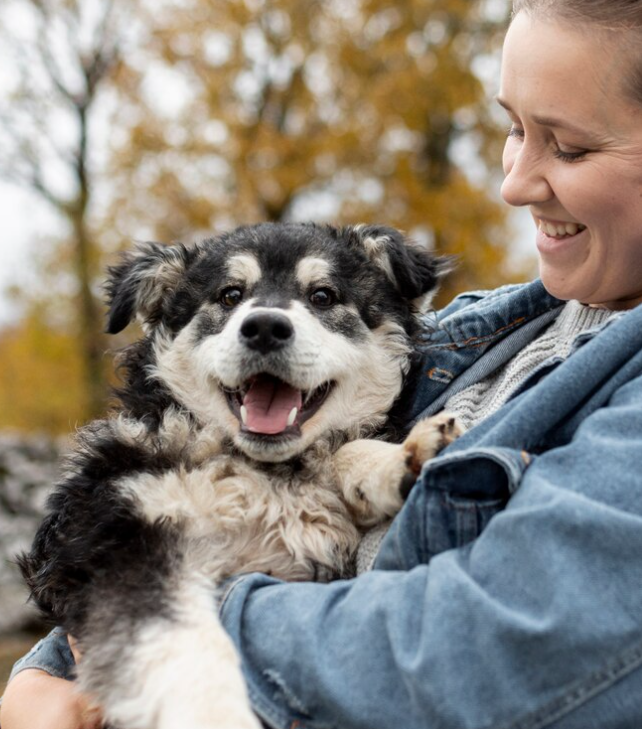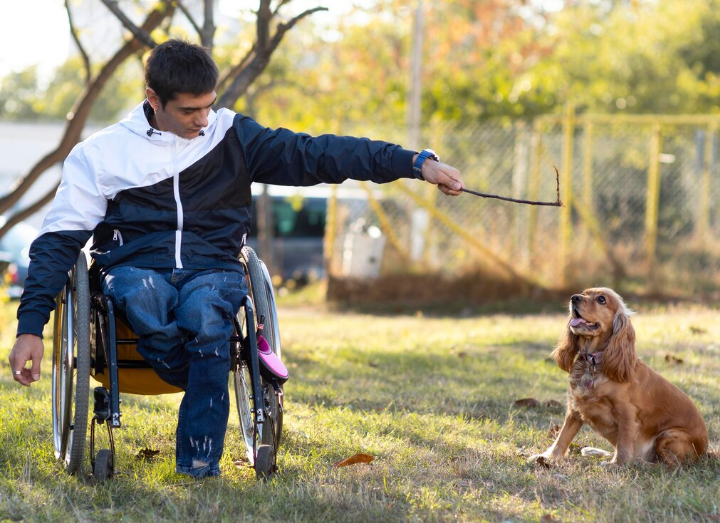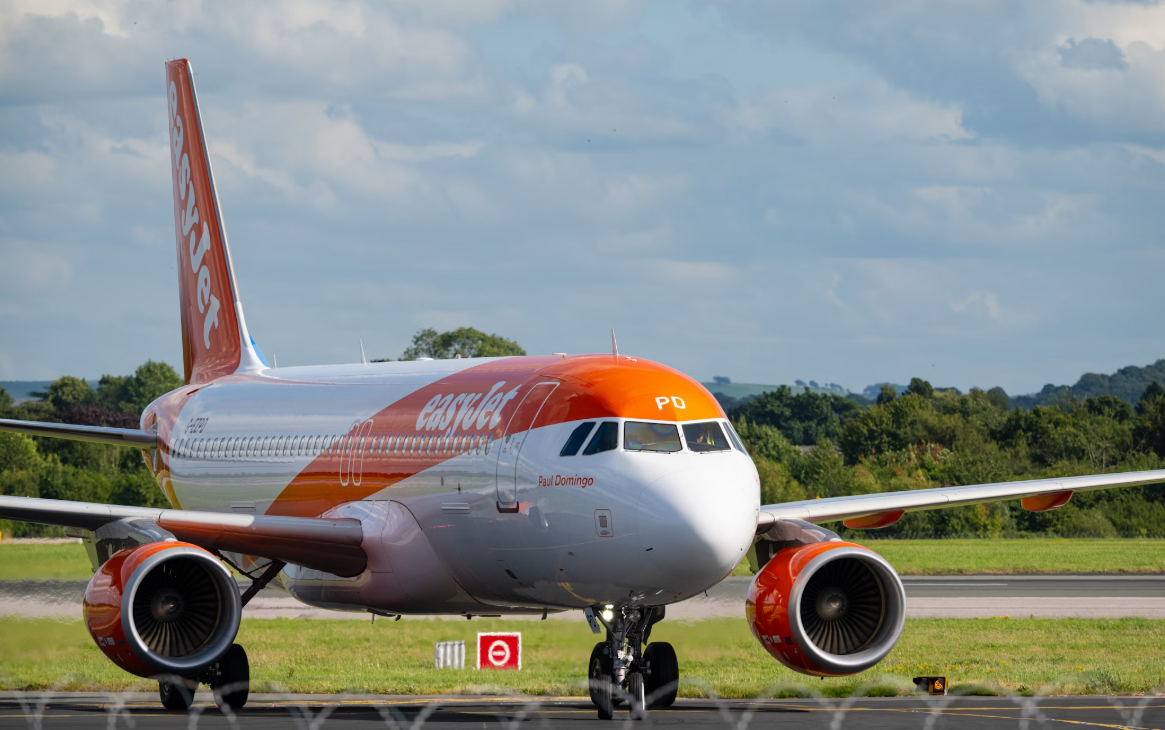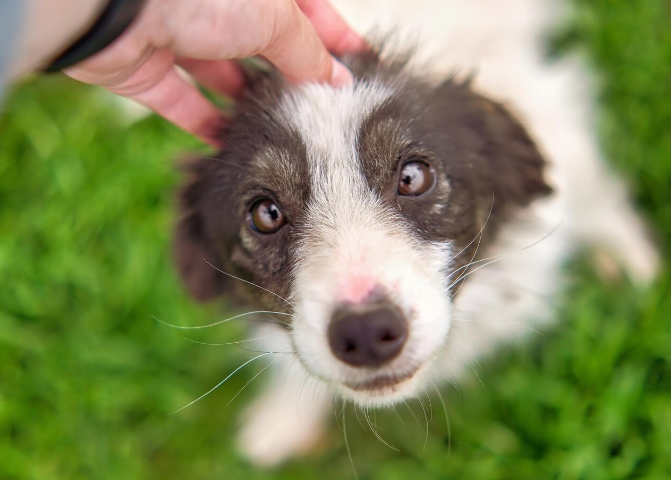
What comes to your mind when you hear the term “service dog”? What are these dogs, and what is exactly their role in their owners’ lives?
The majority of people worldwide are likely to still associate these dogs with guide dogs for people with visual impairments and mobility dogs for individuals with reduced mobility. The versatility of tasks that service animals can perform is often underestimated or not fully understood by the public.
Let’s bring some clarity to this question and explore the purpose of service animals and what they are used for!

What Are and What Aren’t Service Dogs?
Today we will delve into the topic from a bit different perspective, so you get a better understanding of the nature of service animals.
Since service dogs are individually trained to perform specific work to help people with disabilities (these can be both physical and mental), they are considered a medical necessity. They have the status of medical equipment whose use may save the life of their owner.
Service dogs are neither pets nor companion animals. Service dogs are neither pets nor companion animals. The misconception that they are either is still adopted by some members of society.
Service dogs are not pets or companion animals, as they do not only provide companionship or emotional comfort by being present in their owners' lives.
As explained above, they do specific work, that is directly related to a disability and that helps the person deal with the challenges caused by this disability.

What Exactly Are Service Dogs Used For?
Let’s start with tasks that service animals are popular for performing:
Guide Tasks
Training guide dogs is one of the most demanding types of tasks/work that a service dog can be trained to do. Typically, the training process starts at a very young age and is conducted by organizations/schools that specialize in this type of training.
Usually, they breed dogs (mostly of the Golden Retriever, Labrador Retriever, or the German Shepherd breeds) engage in structured and vigorous training, and pair them with a person, when they become about 2 years old.
Due to the nature of guiding tasks, getting a trained service dog through a for-profit organization may be quite expensive to $30,000. If you decide to contact a non-profit organization, you should be ready to wait for a dog for one or several years, due to the typically long waiting lists.
Mobility Assistance
Mobility tasks and balance support are probably the second type of task that service dogs are most often associated with.
However, in contrast with the popular opinion, that mobility service dogs can only pull a wheelchair, they can actually be trained in various mobility-related tasks. Among these are opening/closing doors, and cabinets; push-targeting, including pushing a cart; retrieving items, especially medication, phone, or beverage; bringing items dropped on the floor back to the owner or removing them off the floor and many more.
What types of tasks a person with mobility impairment might need their service dog to do, is quite individual and depends on the particular needs of that person. It is also worth noting, that mobility-related tasks can be performed for the benefit of a person, who has fainting episodes; feels dizzy due to the side effects of prescribed medication; has a panic attack, or otherwise is unable to go get a certain item without assistance.
Medical Alert Tasks
What are these? Medical alert training is based on scent training. It relies on the great sense of smell that dogs have and their ability to learn to differentiate between different scents. In this particular case, a service dog is trained to recognize the specific scent of their owner when they have a medical episode. This might be an epileptic episode, an increased heart rate, high or low blood sugar levels, severe migraine, etc.
When talking about mobility training, it is logical that only dogs with physical strength can perform physically demanding tasks. When talking about medical alert tasks, what requirements service animals might need to meet?
Long-muzzled canines are typically preferred as medical alert dogs for one simple reason- they have a larger number of olfactory receptors compared to short-muzzled dogs. Having said that, this might help you make the right decision if you are wondering if training a Poodle or a Bulldog would be a better choice. Of course, this does not automatically mean that your short-muzzled paw friend won’t be able to perform medical alert tasks for you. Some dogs are highly attuned to their owners and actively seek physical contact with them. Having a paw companion, with whom you have a strong bond and who is calm and well-mannered is the most important factor to take into account.
Alerting to Sounds in the Environment
Let’s not confuse medical alerting tasks with alerting to sounds in the environment. Alerting to sounds is a task, that hearing dogs perform. Common sounds these service dogs can be trained to alert their owners to are:
- Fire alarm/clock alarm/timer;
- Phone ringing;
- Doorbell ringing;
- Knocking on the door;
- Baby’s cry.
The trained alerting behaviors can vary the same way as the sounds that the dog is trained to pick up on. Common types of alerting behaviors are nose-nudging, giving a kiss, and pawing at the handler.
You can, of course, train your dog to show the type of behavior that works for you the most. It is important that alerting behavior is easy to recognize. For instance, if you train your dog to get into a sitting position or to stare at you, when they hear a specific sound, these types of behavior can easily be overlooked as they are too subtle. Showing a behavior that suggests physical contact with the individual is usually the best option.
Psychiatric Tasks
Psychiatric Service Dog tasks are among the most controversial ones, as Psychiatric Service Dogs are still getting confused with Emotional Support Animals.
We will affirm that, unlike Emotional Support Animals, Psychiatric Service Dogs perform specific tasks or do specific work that mitigates the symptoms of mental and/or developmental disabilities.
Common tasks that PSDs are trained to perform are Deep Pressure Therapy, which is based on training the dog to sit on the owner’s lap or put their chin on the owner’s lap for calming effect; other types of tactile stimulation, i.e. giving a kiss, nose-nudging, pawing at the owner; interrupting repetitive and potentially harmful behaviors; reminding the owner to take medication; providing crowd control when in public; guiding the owner to the exit when an anxiety episode/ panic attack is about to arise, etc.
Retrieve tasks and environmental tasks like turning lights on and off can also be performed by a PSD.
Providing comfort and companionship is also something many service dog owners are looking for, although “comfort and companionship” alone are not specific tasks.
We would say that psychiatric service dog tasks are among the most versatile ones, not only because mental illnesses may manifest differently, but also because many physical disabilities lead to worsening mental health as a side effect.

How to Understand What Type of Service Dog Will Benefit Us the Most?
Sometimes, it is easy for individuals to determine the type of service dog they need; other times, this might become a challenging task, as more than one disability can be present or one disability can lead to various complications and side effects.
The first thing to do is to think about the aspects of your life that are most affected by your disability and the daily tasks you have most challenges with. Your family members might be able to help you determine these, as well as the healthcare professional, who you should consult.
Don’t worry if you figure out that you may need assistance in various aspects of your life and the tasks you may benefit from do not fall under one specific type of training. In such cases, you can contact service dog trainers to receive information on what type of program or customized training might benefit you the most. Make sure to opt for a trainer/training school whose staff is knowledgeable, respectful, empathetic, and know how to understand both dogs and humans, because service dog training is actually teaching both the dog and their owner.












